News Archive
Weekly Balloon News #6 - November 24th 2022
Recent balloon launches and landings
Again this week anything to report here. I will give Aerostar's HBAL610 -the only balloon presumably in flight- another week before dropping it from the "In flight" list. In the past, I've experienced long blank periods with Aerostar balloons in excursions to exotic areas off the ADS-B coverage: when I thought that their flight was over, all the sudden the balloon appeared for a brief period of time close to a tiny island in the middle of nowhere. That was occured with HBAL 484, with HBAL 490 or HBAL 582 just to mention the three most recent examples.
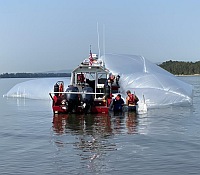
Although it is not a recent "landing", this week I came across a curious incident that occurred in the state of Oregon at the end of August and that finished explaining a curious and short flight of a Near Space Corporation (NSC) balloon from which I reported in the first issue of this newsletter.
NSC launched a balloon on August 31 from their facility -known as the Johnson Near Space Center- in Tillamook but merely an hour after the balloon was back on ground or to be more precise on water. Probable due to a malfunction the balloon returned to earth and ended in the Columbia River not so far from the city of Scappoose in Columbia County. I was able to locate even a video of the very moment on which the gas bag is plumeting to the water freaking out some families that were enjoying a calm beach day. The balloon was recovered that same day in a joint effort between the Scappoose Fire District, Clark-Cowlitz Fire Rescue, Sauvie Island Fire District and the U.S. Coast Guard. An account of the incident can be readed in the St. Helens Chronicle website.
What's on in the field
The restrictions in arrivals from the continent to McMurdo station in Antarctica that the National Science Foundation impossed to stop the COVID-19 outbreak that started in late October, are relaxing a bit. This allows more scientists to arrive at the station for their research tasks during the upcoming austral summer. While the delay wasn't huge, it was long enough to affect NASA's balloon program plans for the season.
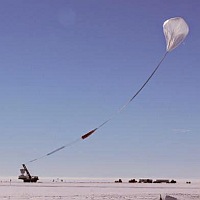
This week, the Columbia Scientific Balloon Facility updated their launch schedule for the 2022/2023 long duration balloon campaign, and dropped from the list two of the three flights planned. The only one remaining is the SPIDER experiment, designed to search for primordial gravity waves imprinted on the cosmic microwave background (CMB). The two other missions were meant to transport two small scientific experiments under a 60 million cubic feet balloon, in what woould be an epic first with the largest balloon ever flown over the continent. The experiments that will now must wait their turn to fly were BOOMS, or Balloon Observation of Microburst Scales, designed at Montana State University to observe flashes of X-ray light that sporadically appear in the polar atmosphere and AESOP-Lite a magnetic spectrometer developed at University of Delaware, to search for the origin of low-energy in the electron spectrum between 10-300 MeV.
And by the way, don't forget to visit from time to time the three main sources for fresh news from the ice this season: SPIDER's tweeter account, the website of Elle Shaw, physics PhD student at University of Illinois Urbana-Champaign participating of the launch campaign and the revived blog of Jeff Filippini, a cosmologist from the University of Illinois and member of the team that also will be reporting from the ice.
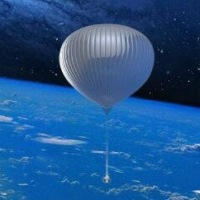
This week an article appeared in the Washington Post with the title What are your passenger rights in space?. The piece wrote by Christopher Elliott explore the grey zones of the space tourism boom and specially the lack of oversight on how space flight companies handle delays, cancellations and refunds.
While the article deals primarily with space tourism, Spaces Perspectives, the Florida-based company that plans to offer balloon rides into near space, is also mentioned. After some research the author affirms that "The (Space Perspectives) contract does not address refunds for any failure to operate a flight. However, its flight reservations form says it offers no warranty to commence commercial operations of its vehicles within any time frame, "or even at all". In this sense, Jane Poynter, the CEO of the company sayd that they are finalizing the details of its terms and conditions for commercial flights starting in late 2024. It plans to include policies for canceled flights, last-minute passenger opt-outs and rescheduling.
She added that "...Explorers can expect to see these posted on our website and given to them individually well prior to providing their final payments...". The company is planning to offer six-hours stratospheric trips at $125,000 the seat starting in late 2024.
Balloon image of the day
Since April 2021, I have published through my Twitter account (@stratoballoon) -at first daily and then more spaced out- a series of images from my archives that reflect important or curious moments in the history of scientific ballooning. Now, every week I will be including some of those posts in this newsletter. Those who want to see more similar content can do so by exploring the hashtag #BalloonImageOfTheDay
Image of a balloon launched from Holloman AFB in October 1993 carrying the OBJS (Off-board Balloon Jammer System) developed by @SwRI
— StratoCat (@stratoballoon) June 29, 2021
It was a surveillance device to be carried in a modified F-111 external fuel tank to be deployed on war scenarios. #BalloonImageOfTheDay pic.twitter.com/veVgZJGI7y
View of a balloon test launch for the future EOLE program, circa 1968. The balloon was released by members of the @CNES balloon division, from the facilities that the french agency had for tracking satellites in #Paardefontein, near Pretoria, Southafrica. #BalloonImageOfTheDay pic.twitter.com/z5xZYhH9wx
— StratoCat (@stratoballoon) June 4, 2021
New contents in StratoCat
This week, I was able to complete the balloon launch reports from a single, but important, balloon launch campaign carried out in 1961 in India.
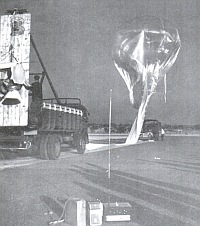
From February to April that year, scientists from India and the United States participated in a cooperative field operation at Hyderabad , India, to perform an extended series of high-altitude balloon flights carrying a variety of scientific instruments to probe the tropical stratosphere. Known as the Joint Indo-US Balloon Flight Program - 1961 the project was a remarkably successful example of scientific cooperation between the two countries. Mutual interest, techniques, instrumentation, facilities, and personnel were exchanged and shared to accomplish a common purpose: the extension of studies on cosmic-ray intensities, radioactive and natural aerosol distribution, wind circulation patterns, and other atmospheric parameters to the equatorial stratosphere.
The instruments flown ranged from Nuclei Counters and Sub-Micron Aerosol Collectors to heavy emulsion stacks to study cosmic radiation.
The table below contains links to the reports of all the balloon flights launched and managed by the United States during the campaign. All those flights were launched from the Begupmet Aerodrome in Secunderabad.
| Launch base | Date | Experiment | Flight duration |
|---|---|---|---|
 Begumpet Begumpet | 1961/4/25 | HEAVY LOAD EMULSION STACK | 28 h 15 m |
 Begumpet Begumpet | 1961/4/21 | HIGH ALTITUDE EMULSION STACK | 1 h 18 m |
 Begumpet Begumpet | 1961/4/20 | AFCRL LARGE IMPACTOR | 4 h 51 m |
 Begumpet Begumpet | 1961/4/18 | AFCRL LARGE IMPACTOR | 4 h 31 m |
 Begumpet Begumpet | 1961/4/16 | HEAVY LOAD EMULSION STACK | 5 h 34 m |
 Begumpet Begumpet | 1961/4/13 | AFCRL LARGE IMPACTOR | 4 h 2 m |
 Begumpet Begumpet | 1961/4/11 | AFCRL LARGE IMPACTOR | 10 m |
 Begumpet Begumpet | 1961/4/8 | SMAC (Sub-Micron Aerosol Collector) | 4 h 53 m |
 Begumpet Begumpet | 1961/4/7 | SMAC (Sub-Micron Aerosol Collector) | 4 h 32 m |
 Begumpet Begumpet | 1961/4/6 | SMAC (Sub-Micron Aerosol Collector) | 4 h 59 m |
 Begumpet Begumpet | 1961/4/5 | SMAC (Sub-Micron Aerosol Collector) | 3 h 32 m |
 Begumpet Begumpet | 1961/4/4 | AFCRL SMALL IMPACTOR | 3 h 51 m |
 Begumpet Begumpet | 1961/4/3 | AITKEN NUCLEI COUNTER | 4 h 23 m |
 Begumpet Begumpet | 1961/3/31 | AFCRL SMALL IMPACTOR | 4 h |
 Begumpet Begumpet | 1961/3/29 | AITKEN NUCLEI COUNTER | 2 h 33 m |
 Begumpet Begumpet | 1961/3/28 | AFCRL SMALL IMPACTOR | 3 h 50 m |
 Begumpet Begumpet | 1961/3/27 | AITKEN NUCLEI COUNTER | 4 h 39 m |
 Begumpet Begumpet | 1961/3/24 | AFCRL SMALL IMPACTOR | 5 h |
 Begumpet Begumpet | 1961/3/23 | AITKEN NUCLEI COUNTER | 2 h 32 m |
 Begumpet Begumpet | 1961/3/22 | SMAC (Sub-Micron Aerosol Collector) | 4 h 41 m |
 Begumpet Begumpet | 1961/3/18 | SMAC (Sub-Micron Aerosol Collector) | 2 h 55 m |
 Begumpet Begumpet | 1961/3/16 | SMAC (Sub-Micron Aerosol Collector) | 2 h 58 m |
 Begumpet Begumpet | 1961/3/14 | SMAC (Sub-Micron Aerosol Collector) | 6 h 16 m |
 Begumpet Begumpet | 1961/3/13 | SMAC (Sub-Micron Aerosol Collector) | 4 h 17 m |
As usual, all the flight reports are full of technical details, pictures -when available- and external references on peer-reviewed papers, freely available thanks to Sci-Hub and the open access community.
See you in seven days.
Weekly Balloon News #5 - November 17th 2022
Recent balloon launches and landings
Since the last edition of this bulletin, as far as I know, no launches and landings have occured. The only balloon presumably in flight (Aerostar's HBAL610) give no signs of life yet. Last seen October 30, offshore Mexican Pacific coast.
What's on in the field
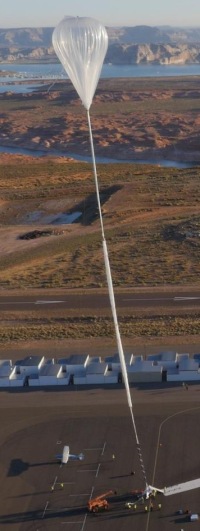
World View Space, the Tucson-based balloon company will partner with Scepter a firm dedicated to measurement of green-house gases and criteria air pollutants to perform Stratollite missions focused in Texas' Permian Basin. The balloons will carry methane-detection sensors to gather first-of-its-kind data on emissions in that area.
The Permian is a region in west Texas that is among the largest regions of oil and gas production in the world. The stratollite carrying hyperspectral sensors operating in short-wave infrared will obtain a very detailed level of data on emissions, measuring down to 50 kg methane per hour and lower to moderate-sized industrial leak, as well "intermittent" leaks in oil and gas production. The clar advantage of Stratollites over other types of vehicles such as satellites or airplanes is their ability to hover over a specific area of interest for a long time.
The first Stratollite mission will be launched in January 2023, initially covering ExxonMobil areas of interest. Then in April, a second one balloon will fly to the Permian to cover additional areas that encompass oil fields operated by companies that include Pioneer, Chevron, Occidental and others.
The complete press release is available here while more details on the Scepter technology can be found on the company website
... and speaking of World View I've received with surprise this week some news about some movements that the company would be making in a place on the Australian east coast, in the state of Queensland, near the meridian of 20� south. Although the information I have may not be entirely correct, this activity would be related to the establishment of a second launch site for balloons of the firm, although I don't know if it is about unmanned Stratollites missions or something more related to the projects of tourist flights.
What I do know so far from sources in Arizona is that the negotiations with the authorities of the city of Page would be advanced in terms of the authorizations required to carry out tourist flights in the area. As I was able to find out, the initiative would include the creation of some type of hotel infrastructure in the style of a resort in the vicinity of the municipal airport, to accommodate those who will take part in these flights.
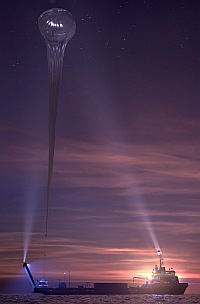
Space Perspective, the Florida-based balloon firm planning to offer tourist flights to the stratosphere, announced this week the acquisition of the MS Voyager a 292-foot-long vessel aimed to serve as marine launch platform for their Neptune capsule.
The vessel which was bought to Edison Chouest Offshore, will be operated for Space Perspective by Guice Offshore using Port Canaveral as home port. Currently, the ship is being outfitted for balloon operations at Conrad Shipyard, preparations for which were provided by Gulf Ship. Among the modifications planned is the installation at the rear of the ship of a custom-built A-frame to lift up the capsule onto the vessel after the flight and the reconversion of the ship to use biofuel.
Beyond all the marketing rhetoric of "an entire fleet of marine spaceports capable of operating anywhere," and other paragraphs I will ignore, Space Perspective's move is smart and clearly based on an analysis of the history of scientific ballooning: having only one ground site on Florida's Space Coast to perform their launches will decrease sharply the days per year suitable for flight, specially taking account the smoothness needed in the operation when human passengers are involved. Now, with the addition of the MS Voyager they could launch from the Ocean as the great advantage offered by a vessel is that she can create a "zero-wind condition" by sailing with the wind at it's same speed.
According to the press release, MS Voyager will begin operations in the New Year, aligned to Space Perspective's planned test flights starting in early 2023.
A little bit of history
Scientific ballooning used ships of all kind and sizes as launch platforms for stratospheric balloons. Here is a brief chronological resume and some links to more information within StratoCat:
 USS Saipan (CVL-48) - Was the first aircraft carrier ever used for launch balloons in the Caribeean, Feb. 1949
USS Saipan (CVL-48) - Was the first aircraft carrier ever used for launch balloons in the Caribeean, Feb. 1949
 USS Norton Sound (AVM-1) - Performed two campaigns in the Pacific, March and July 1949
USS Norton Sound (AVM-1) - Performed two campaigns in the Pacific, March and July 1949
 USS Palau (CVE 122) - Campaign near Jamaica, Nov. 1949
USS Palau (CVE 122) - Campaign near Jamaica, Nov. 1949
 USS Wyandot (AKA-92) - Launched balloons for cosmic ray research in 1951 from North Atlantic
USS Wyandot (AKA-92) - Launched balloons for cosmic ray research in 1951 from North Atlantic
 USCGC Eastwind (WAGB 279) - Launched balloons and rockoons (balloon launched rockets) for cosmic ray research during summer arctic cruises in 1952, 1953 and 1954.
USCGC Eastwind (WAGB 279) - Launched balloons and rockoons (balloon launched rockets) for cosmic ray research during summer arctic cruises in 1952, 1953 and 1954.
 USS Staten Island (AGB-5) - Launched balloons and rockoons for cosmic ray research during summer arctic and antarctic cruises in 1953, 1955 and 1958.
USS Staten Island (AGB-5) - Launched balloons and rockoons for cosmic ray research during summer arctic and antarctic cruises in 1953, 1955 and 1958.
 USS Currituck (AV-7) - Launched balloons near the Equator during 1953 as part of "Operation Churchy" an US Navy balloon campaign for cosmic ray research
USS Currituck (AV-7) - Launched balloons near the Equator during 1953 as part of "Operation Churchy" an US Navy balloon campaign for cosmic ray research
 USS Atka (AGB-3) - Launched balloons and rockoons for cosmic ray research during summer arctic cruises in 1954 and 1958.
USS Atka (AGB-3) - Launched balloons and rockoons for cosmic ray research during summer arctic cruises in 1954 and 1958.
 USS Colonial (LSD-18) - Launched rockoons off California coast in 1958
USS Colonial (LSD-18) - Launched rockoons off California coast in 1958
 USS Plymouth Rock (LSD29) - Launched rockoons for cosmic ray research during summer arctic in 1957.
USS Plymouth Rock (LSD29) - Launched rockoons for cosmic ray research during summer arctic in 1957.
 USS Boxer (LHD-4) - Served in 1958 to launch the one and only balloon-borne nuclear device ever detonated, the shot codenamed YUCCA as part of Operation "Hardtack"
USS Boxer (LHD-4) - Served in 1958 to launch the one and only balloon-borne nuclear device ever detonated, the shot codenamed YUCCA as part of Operation "Hardtack"
 USS Windham Bay (CVE-92) - Served to launch reconnaisance balloons from the North Pacific towards the Soviet Union in 1958 as part of operation "Melting Pot"
USS Windham Bay (CVE-92) - Served to launch reconnaisance balloons from the North Pacific towards the Soviet Union in 1958 as part of operation "Melting Pot"
 USS Valley Forge (CV-45) - Launched several balloons for cosmic ray research in the Caribeean in 1960
USS Valley Forge (CV-45) - Launched several balloons for cosmic ray research in the Caribeean in 1960
 USS Lamar (PE-899) - Performed some balloon tests in the great lakes in 1960 and 1961 as part of Project Wetfoot
USS Lamar (PE-899) - Performed some balloon tests in the great lakes in 1960 and 1961 as part of Project Wetfoot
 USS Antietam (CG-54) - Served as launch platform for the last flight of the Stratolab Program in June 1961 in the Gulf of Mexico
USS Antietam (CG-54) - Served as launch platform for the last flight of the Stratolab Program in June 1961 in the Gulf of Mexico
 ARA Comodoro Augusto Lasserre (Q 9) - Performed several balloon launches for cosmic ray research
ARA Comodoro Augusto Lasserre (Q 9) - Performed several balloon launches for cosmic ray research
 USS Wood County (LST-1178) - Served to test a vertical launch system for balloon in 1964
USS Wood County (LST-1178) - Served to test a vertical launch system for balloon in 1964
 Shooner Goodwill - Launched balloons from the South Pacific as part of an expedition to study a solar eclipse in 1965
Shooner Goodwill - Launched balloons from the South Pacific as part of an expedition to study a solar eclipse in 1965
 USCGC Point Judith (WPB-82345) - Served to launch the 7th flight of the ATMOSAT manned program in 1977
USCGC Point Judith (WPB-82345) - Served to launch the 7th flight of the ATMOSAT manned program in 1977
 MV Independence - Performed a balloon launch for Kestrel project in 1988
MV Independence - Performed a balloon launch for Kestrel project in 1988
 RV Triton - Attempted to launch the balloon for QINETIQ1 manned mission in 2002
RV Triton - Attempted to launch the balloon for QINETIQ1 manned mission in 2002
 Constanta (NSSL 281) - Performed several launches for ARCA Space in Romanian waters in the Black Sea
Constanta (NSSL 281) - Performed several launches for ARCA Space in Romanian waters in the Black Sea
 Research Vessel Hakuho Maru - Launched balloons for air sampling in the equatorial area of the Pacific Ocean in 2012
Research Vessel Hakuho Maru - Launched balloons for air sampling in the equatorial area of the Pacific Ocean in 2012
 Janus II - Launched a balloon in the Mediterranean Sea in 2017 for COMEX project
Janus II - Launched a balloon in the Mediterranean Sea in 2017 for COMEX project
 Rayo (P-42) - The spanish patrol launched two balloons near Canarias Islands in May 2022
Rayo (P-42) - The spanish patrol launched two balloons near Canarias Islands in May 2022
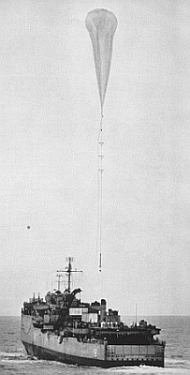
Balloon image of the day
Since April 2021, I have published through my Twitter account (@stratoballoon) -at first daily and then more spaced out- a series of images from my archives that reflect important or curious moments in the history of scientific ballooning. Now, every week I will be including some of those posts in this newsletter. Those who want to see more similar content can do so by exploring the hashtag #BalloonImageOfTheDay
This behemoth was a cosmic ray detector for ultra-heavy particles developed at the Washington University St. Louis in the 70's.
— StratoCat (@stratoballoon) December 14, 2021
It was one of the largest balloon-borne devices ever flown in balloons and the great-grandfather of TIGER and @SuperTigerLDB #BalloonImageOfTheDay pic.twitter.com/sWwHQTMmhk
Preparatives for one of the dozen stratospheric balloons launched nearby Syowa Station in Antarctica in austral summer of 1969.
— StratoCat (@stratoballoon) July 17, 2021
The flights were part of studies of Aurora and Cosmic Rays performed during the 11th Japanese Antarctic Research Expedition#BalloonImageOfTheDay pic.twitter.com/UYXM8n9jhk
New contents in StratoCat
This week, news contents on the website are limited to the far east: China and India.
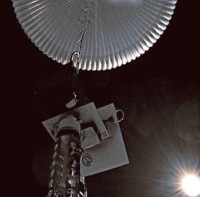
The first two flight reports highlight a recent development in China's balloon program such as solar cell calibration. Until a few years ago, the only two nations that had this capacity were the United States and France, but starting in the 2010 decade, an incipient program began to materialize, the first fruits of which were seen in two flights carried out from Inner Mongolia in August 8, 2018 and more recently from Dachaidan, in the Tibetan Plateau in October 2nd, 2022. In the image at right we can see the solar tracker with the cells during a test flight.
The rest of the flight reports incorporated in the website this week -that you will find in the table below- relate to two experiments of the X-ray astronomy program in India. The first of them called XMPC which was aimed to observe hard X-ray galactic sources using then new techniques based in large area multi-wire proportional counters, flew 12 times with mixed results between 1984 and 1998.
The second known as LAXPC flew only once in 2008, to assess the performance of X-Ray detectors built for ASTROSAT, India's first satellite fully devoted to astronomical observations which was put in orbit in 2015.
All those flights were launched from the National Balloon Facility in Hyderabad.
As usual, all the flight reports are full of technical details, pictures -when available- and external references on peer-reviewed papers, freely available thanks to Sci-Hub and the open access community.
See you in seven days.
Weekly Balloon News #4 - November 10th 2022
Recent balloon launches and landings
Since the last edition of this bulletin, Aerostar performed another balloon launch from Paso Robles Municipal Airport in San Luis Obispo county, California on November 3rd. The Thunderhead balloon followed a path closer to the route of HBAL612 last week, landing 58 km SW of Las Vegas, Nevada after 17 hours aloft. Details of the mission (dubbed as HBAL613) are available here.
In other news, no signs of life yet for HBAL610 seen for the last time on October 30, offshore Mexican Pacific coast.
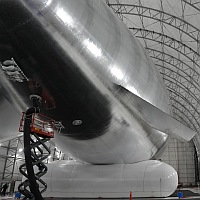
Regarding the flight of SCEYE ONE the stratospheric airship that I've mentioned in last issue, the company remained in silence about the test. Nothing appeared in their website or social media.
The only mention about the test appeared in
an article in New Mexico INNO a news media website devoted to offer insight on innovation in the state.
According to the statement offered by Stephanie Luongo, Sceye's chief of mission operations "...Among the flight outcomes were the safe, successful testing of vertical launch and ascent, retrieval of important payload data, and the testing of various subsystems that will help the company build the next iteration of its HAPS, and continue to mature its designs...". During the flight, the airship acted "like a cell phone tower, but in the sky" allowing a ground team to connect using their cell phones to a broadband device attached to the vehicle as it hovered in the stratosphere.
The article was complemented with nice pictures of SCEYE ONE inside the hangar (like the one at right above) and general views of the facilities built by the firm in the NW corner of the Roswell Air Center. As expected, no mention was made to the troubled landing.
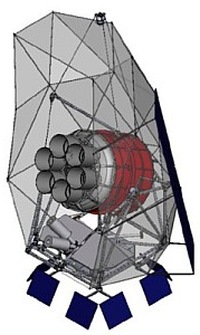
With the arrival to McMurdo station of the first scientific teams earlier this month, a new NASA balloon launch campaign on Antarctica has started. This year's will be the first one carried out since austral summer of 2019/2020 when the COVID pandemic outbreak and its aftermaths forced to cancel all balloon activity on the next two summers. This caused a long delay in the allways busy queue for a place to ride the polar vortex in a long-duration balloon mission.
The main scientific mission to be flown this year will be SPIDER (image at right), an experiment designed to search for primordial gravity waves imprinted on the cosmic microwave background (CMB). This will be the second flight of the instrument after a 16 days-long trip in 2015.
Even though this year seemed like the year everything would be left behind, in late October an outbreak of COVID-19 infections occured in McMurdo which is complicating more than anticipated the activity at the base. According to the National Science Foundation, almost 10% of all personnel was infected. As a result, in November 5 was implemented a pause on all travel to McMurdo Station for the next two weeks while the situation is reassessed. Despite the fact that normally, balloon launches occur between mid December and early January, the two weeks hiatus could affect the arrival of key support personnel and delay the preparation tasks for the campaign. As far as I know the SPIDER integration is progressing well, but I still don't have confirmation about the two other instruments that should participate this year.
Stay tuned for more details next week.
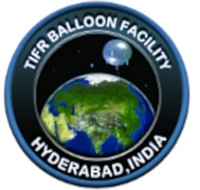
This month will start a new balloon launch campaign at India's National Balloon Facility in Hyderabad. According to the widespread announcement in several newspapers, the facility operated by the Tata Institute for Fundamental Research (TIFR) will perform a campaign between this month and April 2023 in cooperation with the Indian Atomic Energy Commission (IAEC) and the Indian Space Research Organisation (ISRO).
The announcement stated that the first launch window will open on November 21 and will endure 5 days to get the chance to launch a balloon-borne telescope weighing around 800 kg. The rest of the flights will be devoted to "climate studies". The press release also stated clearly that if found, the payloads should not even be moved from their place of landing as any disturbance caused to them will result in the loss of data. The "suggestion" is not entirely uncommon as in the recent past there have been some "incidents" with gondolas being vandalized or in some cases hidden in order to collect the reward offered for their return.
What's on in the field

Space Engine Systems will move the upcoming test of its Turbo-Ramjet Hypersonic Drone -better known as SEXBOMB- from its original site in Lynn Lake, Manitoba, Canada to Cornwall Spaceport in the UK. The Canadian-based aerospace company will use a stratospheric balloon to perform a drop test of their hypersonic vehicle. SEXBOMB is a technology demonstrator vehicle designed to cruise at a speed of Mach 5 and utilize multi-fuel combustion of non-toxic liquid and solid propellants.
In the brief press release, no certain date for the test was given.
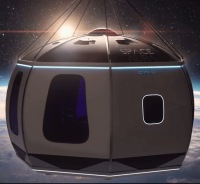
SPACE AURA is the name of a new contender of the over-populated ecosystem of the companies aiming to offer near-space balloon-based experiences. The Mumbai-based firm gained some headlines this week after presenting their capsule SKAP1 (which they call with the pompous term of "Spaceship") and their plans to start operations in India as soon in 2025. What experience have the Indian company? a couple of unmanned balloon flights on which they sent a diamond ring and a custom-digital screen for marketing purposes. And nothing more.
The portfolio offered by SPACE AURA ranges from the usual luxury capsule ride with breath-taking views of the earth below to what they call "Space Diving" on which "Space Athletes" (sic.) "...will dive from near space to compete for the Beyond Earth Championship (BEC)..." or the "Space Aura Experience (SAE)" to spend several days on a mission along with the professional astronauts to experience the beauty of the Earth and vastness of space.
The great proliferation of initiatives around balloon tourism reminds me a lot of the frantic race for the stratospheric jump that existed in the first decade of this century. At that time all kinds of adventurers appeared trying to achieve their goal, many of whom did not have the minimum preparation, or others did not have the necessary elements -both material and human- to achieve their goal.
Balloon image of the day
Since April 2021, I have published through my Twitter account (@stratoballoon) -at first daily and then more spaced out- a series of images from my archives that reflect important or curious moments in the history of scientific ballooning. Now, every week I will be including some of those posts in this newsletter. Those who want to see more similar content can do so by exploring the hashtag #BalloonImageOfTheDay
Preparing the launch of a balloon from the deck of the seaplane tender USS Norton Sound as part of "Operation Skyhook" off Norfolk. October 1948.
— StratoCat (@stratoballoon) November 8, 2021
Image by family of Captain Thomas Ahroon - Norton Sound veterans association#BalloonImageOfTheDay pic.twitter.com/YCpozTTIEw
Launch, flight at float and landing of Brazil's mask coded telescope #MASCO aimed to detect radiation sources of cosmic origin in the Gamma ray domain of the spectrum.
— StratoCat (@stratoballoon) September 18, 2022
It flew only once on April 1st. 2004, achieving 11 hours of stable flight at 40 km. #BalloonImageOfTheDay pic.twitter.com/5f11v60E3z
New contents in StratoCat
This week, I've returned to the eclectic pattern that I like so much and helps me to stay away from boring.
First flight report added belongs to a study performed on atmospheric gravity waves above India. The flight was launched from TIFR balloon facility in September 13, 2019.
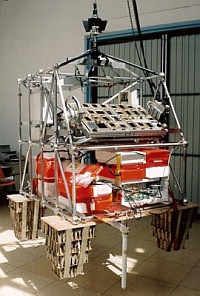
Next two flight reports came from China. Back in 1984 the Institute of High Energy Physics (IHEP) performed the first flight of a then new X-Ray telescope dubbed HAPI-1. The flight was carried out from the Xiang He Balloon Launch Center in Hebei, on May 23th. More recently, the Aerospace Information Research Institute performed a test of a heavy duty balloon during a campign held this year in the Tibetan Plateau.
Finally, I've focused my attention in a series of balloon flights performed by the french space agency CNES for a program started in late 1970's to calibrate solar cells using stratospheric balloons denominated CASOLBA (CAlibration de cellules SOLaires sur vol BAllon). The flights were performed yearly, using the platform shown at right, from the bases of Aire Sur L'Adour and Gap-Tallard in
1988,
1994,
1996,
1998,
1999 and twice in 2001 on
June 21th and
October 4th.
As usual, all the flight reports are full of technical details, pictures -when available- and external references on peer-reviewed papers, freely available thanks to Sci-Hub and the open access community.
See you in seven days.
Weekly Balloon News #3 - November 4th 2022
Recent balloon launches and landings
The Aerostar Thunderhead launched by the company, on October 27th from Paso Robles Municipal Airport in San Luis Obispo county, California finally performed a flight shorter than expected. The balloon with callsign HBAL612 landed 50 km SW of Las Vegas, Nevada after covering 555 kilometers in 29 hours. Details and map available here.
Meanwhile, HBAL610, the other balloon of the firm in flight continued its way into the Pacific Ocean and dissapeared from the ADS-B tracking grid about October 30. Now it only remains to wait where and when it reappears, if it ever does.
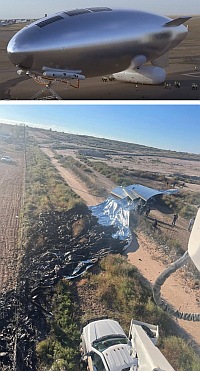
Sceye a Swiss company that aims to use solar-powered stratospheric airship to improve internet access in rural and remote areas, performed over the weekend another flight test of SCEYE ONE their 252 feet-long unmanned vehicle. The flight took place at the company's facility located close to the North end of the 17/35 runway in the Roswell Air Center in New Mexico.
The airship was released about 16:40 utc on October 30th, 2022 climbing to a mean altitude of 50.000 ft within half an hour of flight. Due to the metallic surface of the vehicle's hull it was very visible from the ground as a shinny flying bean. It moved eastward at an speed between 20 and 40 knots entering the state of Texas about 19:25 utc and starting to descent a little more than an hour later. Landing occured in an open field close to the landfill of the city of Meadow, TX at 21:00 utc.
Although yet no official word was issued by Sceye about the flight, apparently it not ended as intended. Reconstructing the facts from the pictures published by casual witnesses of the landing, after deflated the airship hit the ground with its nose in a vertical manner. According to what the images show, a small bubble of helium that was still left in the vehicle kept it in a vertical position. At a certain moment, perhaps due to the action of the wind, the envelope came into contact with nearby power wires and part of the envelope caught fire resulting in the total destruction of the fore half of the vehicle as can be seen in the image at left and below.

What's on in the field
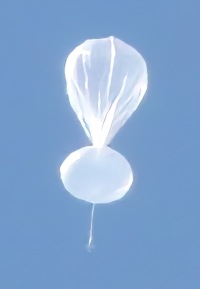
Sierra Nevada Corp. the US aerospace and national security contractor specializing in aircraft modification and integration announced this week that completed succesfully the first test of its rapidly deployable High-Altitude Balloon for stratospheric communications and intelligence, surveillance and reconnaissance (ISR). Operations were carried out using the World View Stratollite shown in the image at right, between September 15 and 25, 2022. The balloon operated by the Tucson-based balloon company, moved across Arizona, Utah, Colorado and Kansas, performing key station-keeping missions on isolated areas and then moving to more urban environments. The next phase of demonstrations to be carried out in 2023 will include at least four more missions including a 60-day test flight.
According to the
press release the mission was a critical part of the company's U.K. Ministry of Defence's (MOD) Project Aether Flight 1 Assessment Phase contract. Project Aether contract calls for a demonstration of uncrewed stratospheric communications and ISR capability with a global reach in near-real time. It covers a 19-month effort from 31 May 2022 through to 31 December 2023, and is valued at up USD 132 million.
Without straying too far from the previous news, an Arizona Court of Appeals brought also this week bad news to World View Space. In another iteration of the lawsuit that the Goldwater Institute first filled in 2016 against Pima County by the agreement with World View for the construction and lease of their launch facility known as Spaceport Tucson the court of appeals
found objectionable the part of the agreement that states that the company was expected to repay the $15 million that costed the facility with small monthly payments over 20 years. At the end of that span, the county would then sell the buildings to World View for a symbolic amount of $ 10. "...We find it difficult to believe that a facility with an approximate value of $14 million in 2036 can fairly be exchanged for $10 without violating our constitutional proscription against subsidies or gifts to private entities..." the judges wrote.
The decision could be appealed to the Supreme Court, but the Goldwater Institute already warned that would be a bad idea for Pima County. At the moment of closing this edition, no official word was issued on the subject neither by Pima County nor World View.
Balloon image of the day
Since April 2021, I have published through my Twitter account (@stratoballoon) -at first daily and then more spaced out- a series of images from my archives that reflect important or curious moments in the history of scientific ballooning. Now, every week I will be including some of those posts in this newsletter. Those who want to see more similar content can do so by exploring the hashtag #BalloonImageOfTheDay
The telescope/spectrograph RASOLBA just before launch from @CNES balloon base of Aire Sur L'Adour in 1985. The experiment, developed by LPSP/IAS was used to perform high resolution spectroscopic observations of the solar spectrum from the stratosphere.#BalloonImageOfTheDay pic.twitter.com/j0dsZePxP5
— StratoCat (@stratoballoon) June 9, 2021
In the image, a very innovative balloon gondola made from #Dexion slotted angle during a flight from Page (AZ) in Feb. 1967. It transported early versions of the one inch Far IR telescope developed by NASA's Goddard Institute for Space Studies in late 60s. #BalloonImageOfTheDay pic.twitter.com/4JonV38bWF
— StratoCat (@stratoballoon) June 22, 2021
Image of a balloon launched from Holloman AFB in October 1993 carrying the OBJS (Off-board Balloon Jammer System) developed by @SwRI
— StratoCat (@stratoballoon) June 29, 2021
It was a surveillance device to be carried in a modified F-111 external fuel tank to be deployed on war scenarios. #BalloonImageOfTheDay pic.twitter.com/veVgZJGI7y
New contents in StratoCat
This week, the new additions to the website all came from a same country: Brazil.
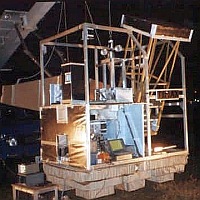
First experiment is an X-Ray Telescope called TIMAX (which can be seen in the image at right) which was developed by the astrophysics division of Brazil's space agency INPE. It flew two times: from Birigui Airport in June 8, 1993 and in December 1994 from INPE's facility in Cachoeira Paulista.
Second experiment is SUGAR originally conceived to verify the performances of Bismuth germanate (BGO) / Caesium iodide (CsI) phoswich detectors, in the domain of gamma-ray astronomy, which was converted into a small-size experiment to detect X-gamma ray emissions from the supernova SN1987A. It flew only once, from Poços de Caldas Municipal Airport in Minas Gerais in October 10, 1987.
Third and last addition of the week was a technological mission called PEROBA, which included three diferent experiments: a gamma radiation nuclear sensor, an infrared radiation sensor and cameras to obtain images of the grund from the stratosphere, all of them housed in an stabilized gondola. The experience was flown from Cachoeira Paulista on in November 19, 1980
As usual, all the flight reports are full of technical details, pictures -when available- and external references on peer-reviewed papers, freely available thanks to Sci-Hub and the open access community.
See you in seven days.


